Brain tumors
A brain tumor is an abnormal mass of tissue that develops within the brain. These tumors can be cancerous (malignant) or non-cancerous (benign). Brain tumors can arise from brain tissue, or they can develop elsewhere in the body and spread to the brain. Tumors are abnormal growths of cells, and they can be detected by your doctor using magnetic resonance imaging (MRI). Tumors that occur on the brain can be benign or cancerous. Benign tumors are growths that do not usually invade nearby tissue or spread to other areas of the body.
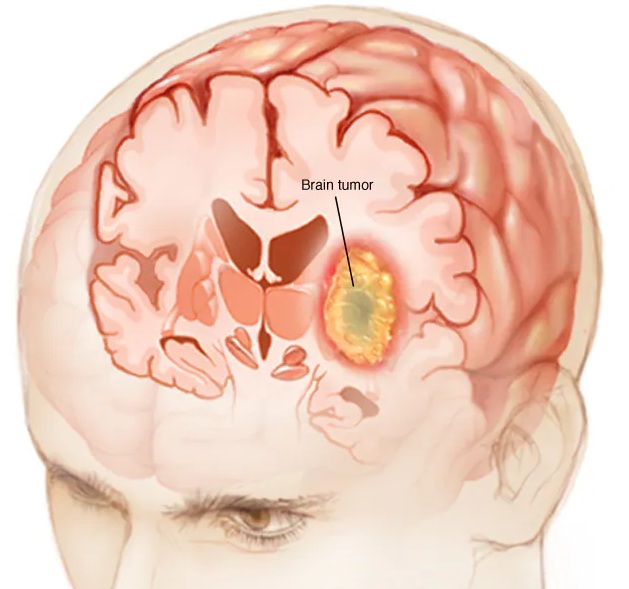
Malignant tumors are cancerous, and they can grow aggressively, by taking the space, blood and nutrients away from healthy cells. They can also spread to other parts of the body.
In general, a benign tumor is less serious than a malignant tumor. But a benign tumor can still cause many problems by pressing on nearby tissues and causing pain, numbness, weakness and immobility.
A variety of brain tumors
Primary brain tumors
Are tumors that originate in the brain when a cell mutates and multiplies in abnormal ways to form a mass. These tumors can form in various parts of the brain.
Metastatic brain tumors
Are made of cancerous cells from a tumor that originated in a different part of the body. The cells spread to the brain from the other tumor in a process called metastasis.
Paraganglioma
It is a neuroendocrine neoplasm that can develop at the head or neck in the paraganglia, which are bundles of cells of the peripheral nervous system, outside the brain and spinal cord.
Gliomas and related brain tumors
Gliomas are growths of cells that look like glial cells. The glial cells surround and support nerve cells in the brain tissue. Types of gliomas and related tumors include astrocytoma, glioblastoma, oligodendroglioma and ependymoma. Gliomas can be benign, but most are malignant. Glioblastoma is the most common type of malignant brain tumor.
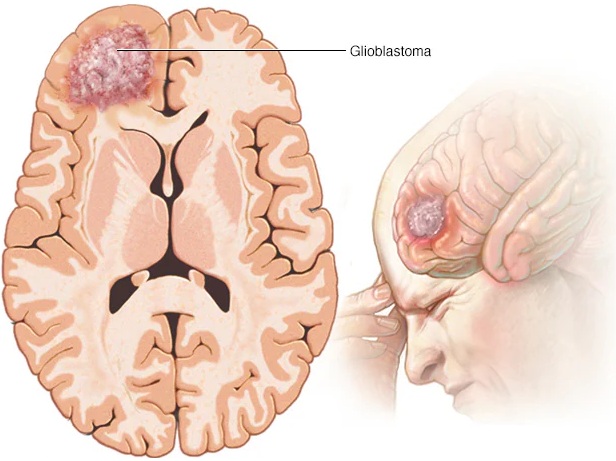
Choroid plexus tumors
Choroid plexus tumors start in cells that make the fluid that surrounds the brain and spinal cord. This fluid is called cerebrospinal fluid. Choroid plexus tumors are located in the fluid-filled cavities in the brain, called the ventricles. THESE can be benign or malignant. Choroid plexus carcinoma is the malignant form of this type of brain tumor. It’s more common in children.
Embryonal tumors
Embryonal tumors begin in cells that are left over from fetal development. The cells, called embryonal cells, stay in the brain after birth. Embryonal tumors are malignant brain tumors that happen most often in babies and young children. The most common type of embryonal tumor is medulloblastoma. It’s usually located in the lower back part of the brain, called the cerebellum.
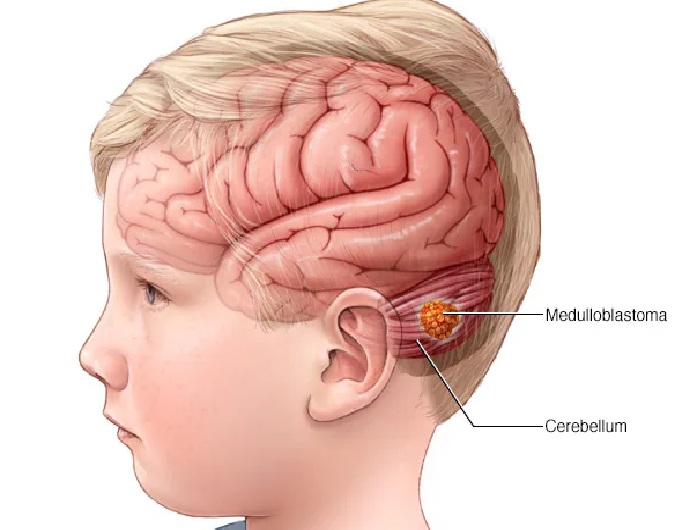
Germ cell tumors Germ cell tumors start in reproductive cells, called germ cells, that go on to become the sperm and egg cells. Germ cells are mostly in the ovaries and testicles. But sometimes they’re in other parts of the body, including the brain. When germ cell tumors happen in the brain, they’re often located near the pineal gland or the pituitary gland. Germ cell tumors are mostly benign. They’re more common in children.
Pineal tumors
Pineal tumors start in and around the brain’s pineal gland. The pineal gland is located in the center of the brain. It makes a hormone called melatonin that helps with sleep. Pineal tumors can be benign or malignant. Pineoblastoma is a malignant type of pineal tumor that’s most common in children.
Hemangioma
It is a vascular brain tumor that typically develops in the cerebellum, at the back of the brain. It is a noncancerous tumor that’s caused by an excess growth of blood vessels in the brain or spinal cord.
Meningiomas
Meningiomas are brain tumors that start in the membranes around the brain and spinal cord. These are usually benign, but sometimes they can be malignant. Meningiomas are the most common type of benign brain tumor.
Pituitary tumors
These are mass growths in the pituitary gland, which is located at the base of the brain and regulates hormones in the body. It can begin in and around the pituitary gland. This small gland is located near the base of the brain. Most tumors that happen in and around the pituitary gland are benign. Pituitary tumors happen in the pituitary gland itself. Craniopharyngioma is a type of brain tumor that happens near the pituitary gland.
Nerve tumors
Nerve tumors are growths that happen in and around nerves. The most common type that happens in the head is acoustic neuroma, also called schwannoma. This benign tumor is located on the main nerve that connects the inner ear to the brain.
Other brain tumors
Many other types of rare tumors can happen in and around the brain. Tumors can start in the muscles, blood vessels and connective tissue around the brain. Tumors can form in the bones of the skull. Malignant brain tumors can start from the germ-fighting immune system cells in the brain. This type of brain cancer is called primary central nervous system lymphoma.
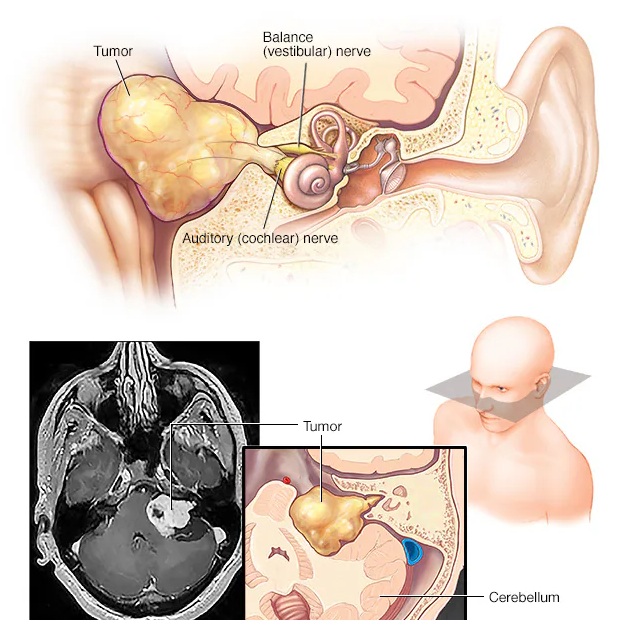
Causes of Brain tumors
Brain tumors that begin in the brain Brain tumors that start as a growth of cells in the brain are called primary brain tumors. They might start right in the brain or in the tissue nearby. Nearby tissue might include the membranes that cover the brain, called meninges. Brain tumors also can happen in nerves, the pituitary gland and the pineal gland.
It happen when cells in or near the brain get changes in their DNA. A cell’s DNA holds the instructions that tell the cell what to do. The changes tell the cells to grow quickly and continue living when healthy cells would die as part of their natural life cycle. This makes a lot of extra cells in the brain. The cells can form a growth called a tumor.
It’s not clear what causes the DNA changes that lead to brain tumors. For many people with brain tumors, the cause is never known. Sometimes parents pass DNA changes to their children. The changes can increase the risk of having a brain tumor. These hereditary brain tumors are rare. If you have a family history of tumors. Consider meeting with a health care provider trained in genetics to understand whether your family history increases your risk of having a brain tumor.
When it happen in children, they’re likely to be primary brain tumors. In adults, these are more likely to be cancer that started somewhere else and spread to the brain.
Symptoms of Brain Tumors
Headaches
Often the first symptom, particularly if the tumor is growing.
Headache or pressure in the head that is worse in the morning.
Headaches that happen more often and seem more severe.
Headaches that are sometimes described as tension headaches or migraines.
That aren’t cancerous tend to cause symptoms that develop slowly. Noncancerous brain tumors also are called benign brain tumors. They might cause subtle symptoms that you don’t notice at first. The symptoms might get worse over months or years.
Cancerous brain tumors cause symptoms that get worse quickly. Cancerous brain tumors also are called brain cancers or malignant brain tumors. They cause symptoms that come on suddenly. They get worse in a matter of days or weeks.
Brain tumor headaches
Headaches are the most common symptom. It happen in about half of people with brain tumors. Headaches can happen if a growing brain tumor presses on healthy cells around it. Or a brain tumor can cause swelling in the brain that increases pressure in the head and leads to a headache.
Headache pain caused by brain tumors is often worse when you wake up in the morning. But it can happen at any time. Some people have headaches that wake them from sleep. Brain tumor headaches tend to cause pain that’s worse when coughing or straining. People with brain tumors most often report that the headache feels like a tension headache. Some people say the headache feels like a migraine.
In the back of the head might cause a headache with neck pain. If the brain tumor happens in the front of the head, the headache might feel like eye pain or sinus pain.
Seizures due to Brain tumors
Can occur if the tumor irritates or compresses brain tissue.
Seizures, especially if there is no history of seizures.
Changes in Mental Function
Difficulty with concentration, memory, or personality changes.
Personality or behavior changes.
Confusion in everyday matters.
Weakness or Paralysis
Can affect one side of the body or a specific area.
Losing feeling or movement in an arm or a leg.
Trouble with balance.
Losing feeling or movement in an arm or a leg.
Vision Problems
Double vision, blurred vision, or loss of vision.
Eye problems, such as blurry vision, seeing double or losing sight on the sides of your vision.
Nausea and Vomiting
May be related to increased pressure within the skull.
Balance Problems
Due to the tumor’s location and pressure on the brain.
Dizziness or a sense that the world is spinning, also called vertigo.
Feeling very hungry and gaining weight.
Hearing problems.
Brain tumor symptoms by location
Brain tumors in the front of the brain.
The frontal lobes are in the front of the brain. They control thinking and movement. Frontal lobe brain tumors might cause balance problems and trouble walking. There might be personality changes, such as forgetfulness and lack of interest in usual activities. Sometimes family members notice that the person with the brain tumor seems different.
Brain lobes
Each side of the brain has four lobes. The frontal lobe is important for thinking and for managing voluntary movement or activity. The parietal lobe is involved in body temperature, taste, touch and movement. The occipital lobe is linked to vision. The temporal lobe processes memories, putting them with taste, sound, sight and touch.
Brain tumors in the middle of the brain.
The parietal lobes are in the upper middle part of the brain. They help process information about touch, taste, smell, vision and hearing. Parietal lobe brain tumors can cause problems related to the senses. Examples include vision problems and hearing problems.
>Brain tumors in the back of the brain. The occipital lobes are in the back of the brain. They control vision. Occipital lobe brain tumors can cause vision loss.
Brain tumors in the lower part of the brain.
The temporal lobes are on the sides of the brain. They process memories and senses. Temporal lobe brain tumors can cause memory problems. They might cause someone to see, taste or smell something that isn’t there. Sometimes the taste or smell is unpleasant or unusual.
The main part of the brain is called the cerebrum.
Brain tumors in different parts of the cerebrum might cause different symptoms.
Brain tumors in the front of the brain.
The frontal lobes are in the front of the brain. They control thinking and movement. Frontal lobe brain tumors might cause balance problems and trouble walking. There might be personality changes, such as forgetfulness and lack of interest in usual activities. Sometimes family members notice that the person with the tumor seems different.
Brain tumors in the middle of the brain.
The parietal lobes are in the upper middle part of the brain. They help process information about touch, taste, smell, vision and hearing. Parietal lobe tumors can cause problems related to the senses. Examples include vision problems and hearing problems.
Brain tumors in the back of the brain.
The occipital lobes are in the back of the brain. They control vision. Occipital lobe brain tumors can cause vision loss.
In the lower part of the brain.
The temporal lobes are on the sides of the brain. They process memories and senses. Temporal lobe brain tumors can cause memory problems. They might cause someone to see, taste or smell something that isn’t there. Sometimes the taste or smell is unpleasant or unusual.
Diagnosis of Brain Tumors
Imaging Scans
MRI (magnetic resonance imaging) and CT (computed tomography) scans are used to visualize the brain and identify the tumor.
Biopsy to confirm brain tumors
A small sample of the tumor is taken for microscopic examination.
Cancer that spreads to the brain
Brain metastases
Secondary brain tumors happen when cancer starts somewhere else and spreads to the brain. When cancer spreads, it’s called metastatic cancer.
Any cancer can spread to the brain
The common types are
Breast cancer.
Colon cancer.
Kidney cancer.
Lung cancer.
Melanoma.
It’s not clear why some cancers spread to the brain and others are more likely to spread to other places.
Secondary tumors most often happen in people who have a history of cancer. Rarely, a brain tumor may be the first sign of cancer that began somewhere else in the body.
In adults, secondary tumors are far more common than are primary brain tumors.
Brain metastases happen when cancer begins elsewhere in the body and spreads (metastasizes) to the brain.
Treatment of Brain Tumors
Surgery for Brain tumors
The most common treatment, aiming to remove or reduce the tumor.
Radiation Therapy
Uses high-energy rays to kill cancer cells.
Chemotherapy
Uses drugs to kill cancer cells.
Targeted Therapies
Drugs that target specific proteins involved in tumor growth.
Important Considerations
Survival Rates.
Survival rates vary depending on the type, stage, and grade of the tumor.
Treatment Side Effects.
Treatment can have side effects, such as fatigue, memory problems, or cognitive difficulties.
Support Organizations.
Several organizations provide support and resources for individuals and families affected by brain tumors.
Risk factors
In most people with primary brain tumors, the cause isn’t clear. But doctors have identified some factors that may raise the risk.
lifestyle.
People are at more risk especially those who are not living their own life properly.
Age.
It can happen at any age, but they happen most often in older adults. Some mostly affect adults. Some happen most often in children.
Race.
Anyone can get a brain tumor. But some types are more common in people of certain races. For example, gliomas are more common in white people. Meningiomas are more common in Black people.
Exposure to radiation.
People who have been exposed to a strong type of radiation have an increased risk of brain tumor. This strong radiation is called ionizing radiation. The radiation is strong enough to cause DNA changes in the body’s cells. The DNA changes can lead to tumors and cancers. Examples of ionizing radiation include radiation therapy used to treat cancer and radiation exposure caused by atomic bombs.
Low-level radiation from everyday objects isn’t linked to brain tumors.
Low levels of radiation include the energy that comes from cellphones and radio waves. There is no convincing evidence that using cellphones causes it. But more studies are happening to make sure.
Inherited syndromes that increase the risk of brain tumor.
Some DNA changes that increase the risk of brain tumor run in families. Examples include the DNA changes that cause neurofibromatosis 1 and 2, tuberous sclerosis, Lynch syndrome, Li-Fraumeni syndrome, Von Hippel-Lindau disease, familial adenomatous polyposis, Cowden syndrome, and Gorlin syndrome.
Prevention
Life style maintenance including enough water intake, food, adequate sleep…etc
proper way of living to maintain physical and mental health
life as not less than and not more than
Go with the purpose in each and every aspects of life. Don’t do anything as an haphazard.
There’s no way to prevent. If you get a tumor, you didn’t do anything to cause it.
People with an increased risk might consider screening tests. Screening isn’t brain tumor prevention. But screening might help find a brain tumor when it’s small and treatment is more likely to be successful.
If you have a family history or inherited syndromes that increase the risk of brain tumor, talk about it with your health care provider. You might consider meeting with a genetic counselor or other health care provider trained in genetics. This person can help you understand your risk and ways to manage it. For example, you might consider brain tumor screening tests. Testing might include an imaging test or a neurological exam to test your vision, hearing, balance, coordination and reflexes.
medlight2u.com
A light on Practice of Medicine (The information provided is for informational and educational purposes only and should not be considered professional advice)
- Sleeplessness (insomnia)
- Furuncle Nostril
- Presbyopia meaning “old eye”
- Oral cancer
- Gestational Trophoblastic Neoplasia (GTN)
Acne Acne vulgaris Acute Renal Failure Adrenal cortex Angina Angina Pectoris Aortic Regurgitation (AR) Aortic Stenosis (AS) Chest pain Chronic pyelonephritis Coarctation of Aorta Cough cyanosis Cystic acne Dehydration depression Diabetes Mellitus Diagnosis of Aortic Stenosis Dr.KTS DR K TAMILSELVAN Fatigue Heart Failure Hypertension Hypokalemia Hypothyroidism Ischemic Heart Disease LBBB Mitral Incompetence Mitral insufficiency Mitral valve prolapse Nocturia Patent Ductus Arteriosus PDA Polyuria Proteinuria pulmonary hypertension Pulmonary Stenosis ST Depression Symptoms of Acne Syncope Treatment for acne valvular heart disease Ventricular Septal Defect VSD Zits

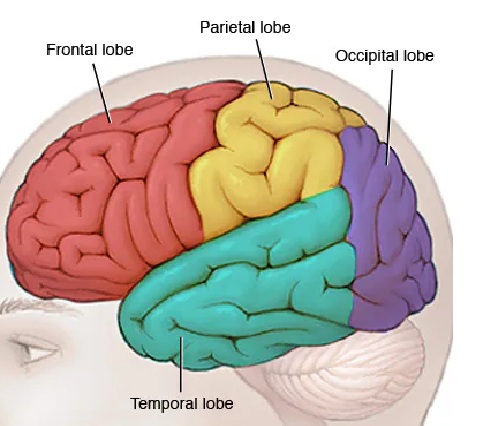
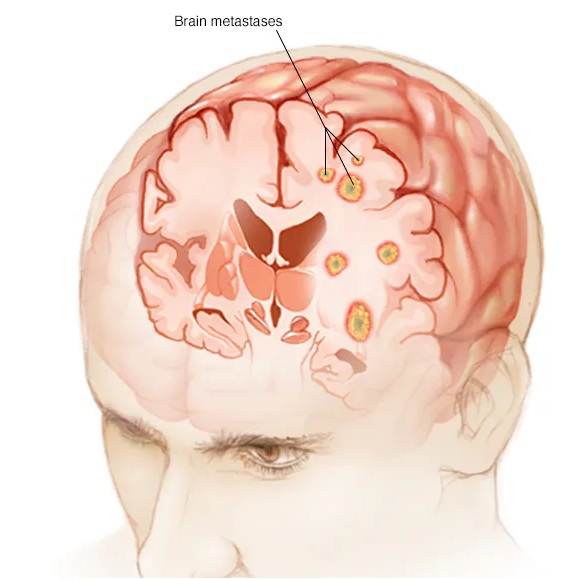


Leave a Reply